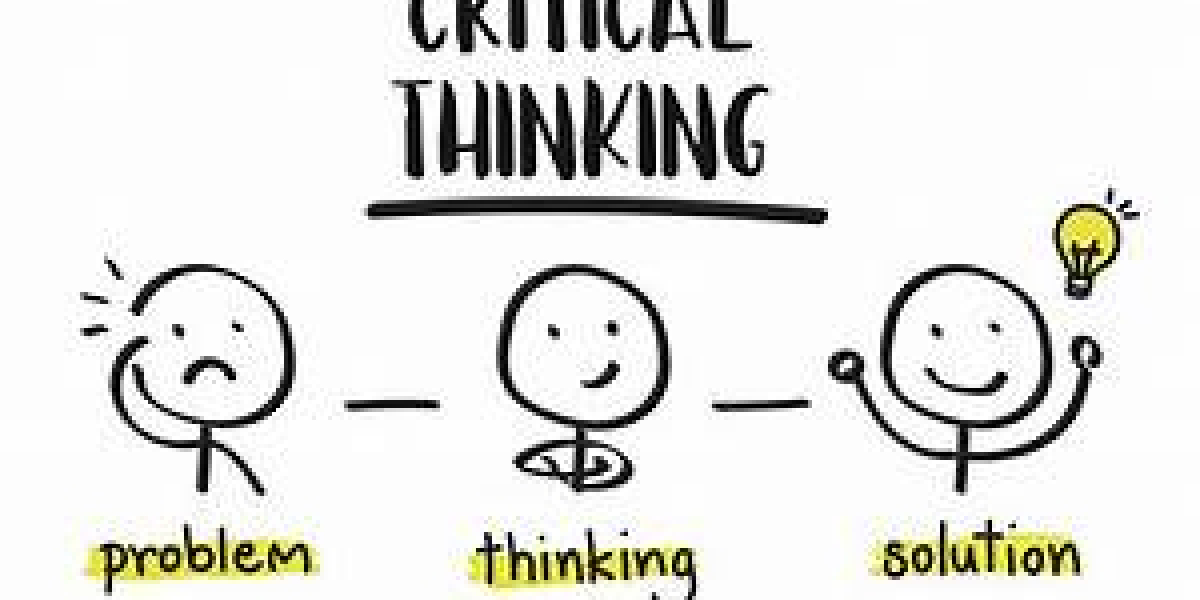Introduction:
In today's fast-paced and competitive business landscape, making informed and effective decisions is crucial for the success of any organization. One key skill that can significantly enhance decision-making is critical thinking. By employing a systematic and analytical approach, critical thinking allows business leaders to navigate complex challenges, identify opportunities, and make well-informed choices. This essay will explore the tenets of critical thinking and how they can be applied to business decision-making processes.
Body:
Define your goals:
The first step in effective decision-making is to clearly define your business goals. By understanding what you aim to achieve, you provide a framework for your critical thinking process. This clarity enables you to align your decisions with your overarching objectives, ensuring that every choice contributes to the success of your business.
Gather relevant data:
To make informed decisions, it is essential to gather and analyze relevant data about your market, customers, competitors, and industry trends. This data-driven approach helps you move away from assumptions and base your decisions on evidence. By thoroughly understanding the landscape in which your business operates, you can identify opportunities and potential pitfalls.
Identify assumptions and biases:
It is important to be aware of any assumptions or biases that may influence your thinking. These can cloud your judgment and hinder objective decision-making. By actively challenging these assumptions and seeking alternative perspectives, you foster a more well-rounded and unbiased approach to decision-making.
SWOT analysis:
Conducting a SWOT (Strengths, Weaknesses, Opportunities, and Threats) analysis is a valuable tool in assessing your business's internal and external factors. This analysis helps identify your strengths and weaknesses, opportunities for growth, and potential threats to your business. By understanding these factors, you can make informed decisions that leverage your strengths and mitigate potential risks.
Risk assessment:
Every decision carries inherent risks. Evaluating and assessing these risks is essential for effective decision-making. Consider the likelihood and potential impact of each risk and develop strategies to mitigate or manage them. This proactive approach enables you to anticipate challenges and make contingency plans, ensuring that your decisions are well-prepared and resilient.
Analyze alternatives:
Effective decision-making involves considering multiple alternatives and evaluating their potential outcomes. Apply logical reasoning and consider the short-term and long-term implications of each option. By thoroughly analyzing alternatives, you can make decisions that align with your goals and yield the best results for your business.
Seek diverse perspectives:
Engaging with a diverse range of stakeholders, such as employees, customers, and industry experts, is invaluable in decision-making. Their unique insights and perspectives can challenge your thinking, uncover blind spots, and provide valuable input. By fostering an environment that encourages diverse perspectives, you can tap into a wealth of knowledge and make more well-rounded decisions.
Test hypotheses:
Whenever feasible, it is beneficial to test ideas or strategies on a small scale before implementing them fully. This approach allows you to validate assumptions, gather real-world feedback, and identify areas for improvement. By piloting your ideas, you can refine your decisions and increase the chances of success when implementing them on a larger scale.
Monitor and adapt:
Effective decision-making doesn't end once a choice is made. It is crucial to continuously monitor the outcomes of your decisions and be willing to adapt and adjust your strategies based on feedback and new information. This iterative process ensures that you can course-correct if necessary and make ongoing improvements to maximize the impact of your decisions.
Foster a culture of critical thinking:
Lastly, it is important to foster a culture of critical thinking within your organization. Encourage your team members to engage in critical thinking, provide a safe space for open discussion and constructive feedback. By promoting a culture that values critical thinking, you can unlock the potential for innovative solutions, improved decision-making, and ultimately, the success of your business.
Conclusion:
Critical thinking is an invaluable skill in business decision-making. By following a systematic and analytical approach, business leaders can make informed choices that align with their goals, leverage data and diverse perspectives, and mitigate risks. By fostering a culture of critical thinking within organizations, businesses can enhance their ability to navigate challenges, seize opportunities, and thrive in today's dynamic business environment.
Share
In Summary
1. Define your goals: Start by clearly defining your business goals. What do you aim to achieve? This will provide a framework for your critical thinking process.
2. Gather relevant data: Gather and analyze relevant data about your market, customers, competitors, and industry trends. This will help you make informed decisions based on evidence rather than assumptions.
3. Identify assumptions and biases: Be aware of any assumptions or biases that may influence your thinking. Challenge them and seek alternative perspectives to foster more objective and well-rounded decision-making.
4. SWOT analysis: Conduct a SWOT analysis to assess your business's strengths, weaknesses, opportunities, and threats. This will help identify areas for improvement and potential avenues for growth.
5. Risk assessment: Evaluate potential risks associated with your business decisions. Consider the likelihood and potential impact of each risk and develop strategies to mitigate or manage them.
6. Analyze alternatives: Consider multiple alternatives and evaluate their potential outcomes. Apply logical reasoning and consider the short-term and long-term implications of each option.
7. Seek diverse perspectives: Engage with a diverse range of stakeholders, such as employees, customers, and industry experts. Their insights can provide valuable perspectives and challenge your thinking.
8. Test hypotheses: If feasible, test your ideas or strategies on a small scale before implementing them fully. This can help validate assumptions and identify areas for improvement.
9. Monitor and adapt: Continuously monitor the outcomes of your decisions and be willing to adapt and adjust your strategies based on feedback and new information.
10. Foster a culture of critical thinking: Encourage your team to engage in critical thinking and provide a safe space for open discussion and constructive feedback. This can lead to innovative solutions and improved decision-making.
Remember, critical thinking is a continuous process that requires active engagement and a willingness to challenge assumptions. By applying these principles, you can make more informed and effective decisions for your business.






